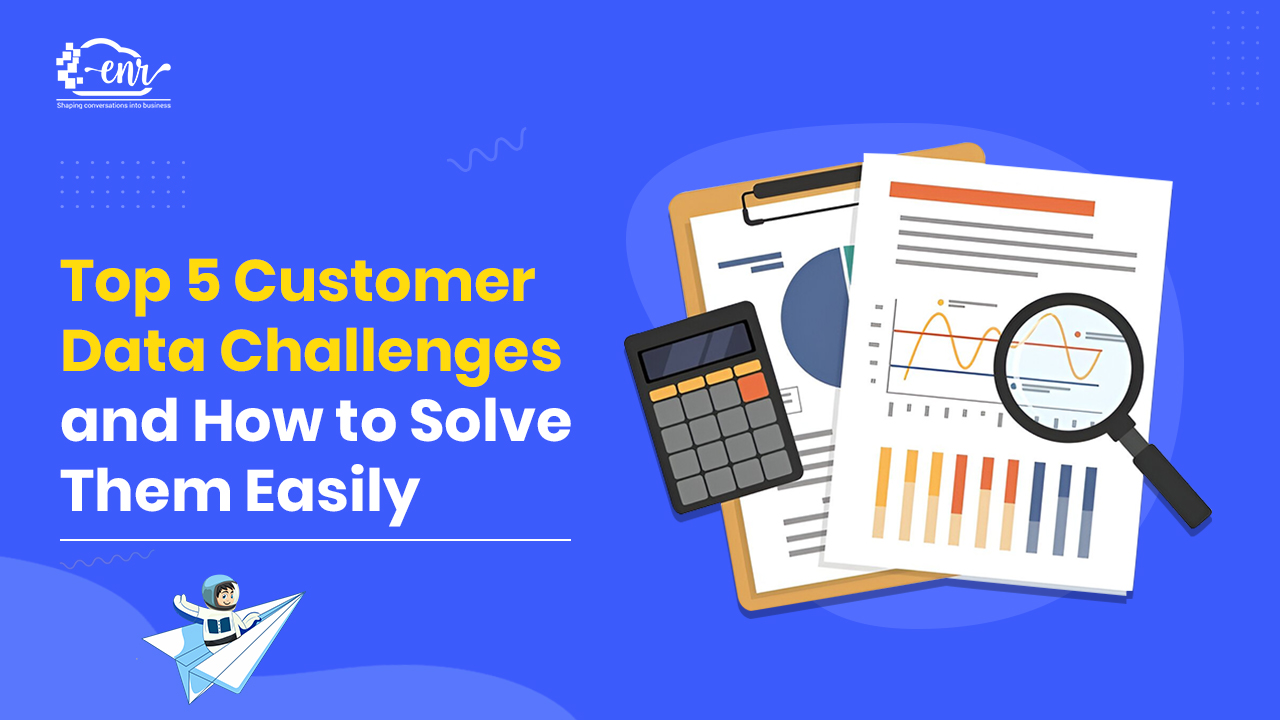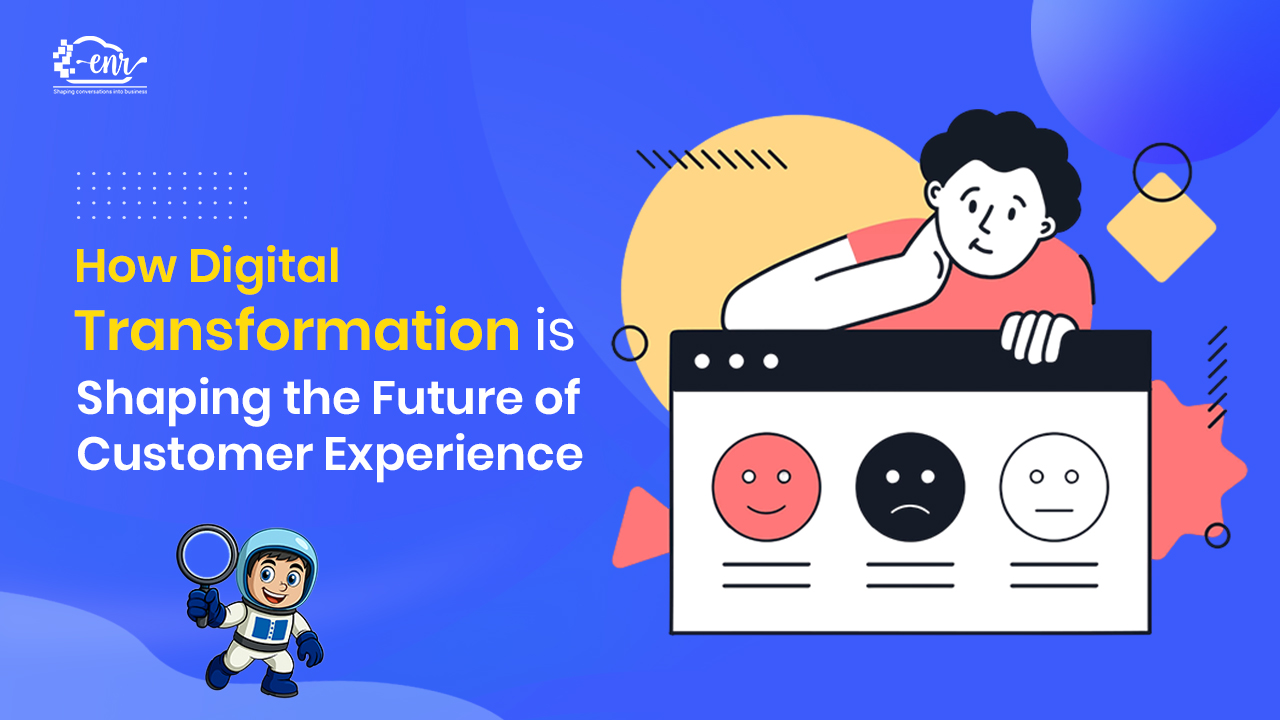Table of Contents
ToggleIntroduction
Data, data, data everywhere, but how do we make sense of it? It is a question that most businesses struggle to answer. Customer data is the backbone of the modern businesses, and it is everywhere. Data is in everything we do, whether we want to watch movie shows that align with our interests or shop for a kind of dress that suits our body type.
Customer data platforms get their data from the online and offline activity done by a consumer, whether it is watching a show, submitting a form online, reading and responding to a text, creating a report, performing an online search, or making a transaction. The use of big customer data helps businesses personalize the consumer experiences, improve marketing strategies, and make smart, data-driven decisions to turn a prospect into a loyal customer. However, poor customer data management, security risks, and compliance issues turn customer data into a liability rather than an asset.
What is Big Customer Data?

It is the latest buzzword that indicates the explosive data growth and customer data platforms, what use advanced tools and techniques to uncover patterns in it. There are four Vs that define big customer data:
- Volume
- Velocity
- Variety
- Veracity
Why do Customer Data Problems Arise?
About 1.7 megabytes of data is created every second per person, and about 80% of data collected by an organization is dark data, i.e., of no use to the company. Customer data can be structured and raw from various sources such as social media feeds, email, images, recordings, video, and search indexes, to name a few.
Companies can reap massive benefits with correct data insights, but big customer data is often messy, scattered, and growing so rapidly that it can be baffling for the traditional systems and techniques to make sense of it. Although artificial intelligence backed analytical tools have made the task easier, big computer data problems still exist.
Not getting ahead of problems associated with customer data can lead to wasted money, missed opportunities, and decline in the customer base. Identifying and fixing the common customer data-related problems can prevent long-term damage and prevent your business from becoming a failing one. In this article, we highlight the five common customer data problems and simple, actionable fixes to improve the data quality, scalability, security, and usability.
Poor data Quality: Inaccurate, Incomplete, Duplicated and Inconsistent Data

This is one of the biggest perils of the large amount of customer data that it can be inconsistent with errors.
Incomplete data means missing information and it directly impacts the insights and analytics given by AI.
Inaccurate data means wrong information is recorded because of manual data entry errors, automated processing errors, or lack of data validation when the data was collected and documented. Poor data accuracy leads to wasted customer campaigns and poor customer experiences. It can be in the form of misspelt names, wrong addresses, wrong email names, etc.
Inconsistent data is when different data sets document the same record differently. This leads to loss of vital information and unfavorable customer experiences.
Duplicate records can cause wasted advertising spends as the same customer will be contacted through different channels, causing them to feel suffocated and pressured.
Poor data quality makes the brand appear disorganized and unprofessional as the customers get the wrong information or miss the communications.
How to Fix This:
- Identify and clearly define the data you want to collect as per your business goals.
- Automate data entries and make them standardized for all sources.
- Set up key fields that need to be met before submission or before importing from external sources.
- Merge or delete duplicative records to get a richer analysis.
- Implement automated data validation rules in data entry.
- AI data cleansing tools to remove duplicates and complete the missing information.
- Conduct regular data audits to remove useless data.
Invest in a robust Data Quality Management (DQM) software to automate data cleaning and validation.
Data Privacy and Compliance Risks

When collecting any kind of customer data, the rules and regulations laid down by the government come into play. The General Data Protection Regulation (GDPR), CCPA, etc., give necessary requirements for data collection and protection as well as the implications of failing to do so. All kinds of data collection, storage and processing should be legal; otherwise:
The business can incur hefty fines. A GDPR violation can lead to up to €20 million or 4% of annual revenue, and under India’s Digital Personal Data Protection Act (DPDP Act) 2003, fines for failing to collect data legally can range from ₹10,000 for individuals to ₹250 crore (approximately $30 million) for organizations, depending on the nature of the violation.
- The business will lose customer trust.
- The brand image gets tarnished.
Unclear consent management and opaque, weak security measures put a big dent in the businesses’ marketing strategies.
How to Fix This
- Be transparent with the customer in clear words about your customer data collection policy and how the data is used, and gain explicit consent for the same.
- Employ AI for compliance monitoring to flag data practices that violate regulations and can lead to customer data problems.
- Adopt and advertise privacy-first strategies such as zero-party data collection, earning customer trust.
- Use crystal-clear customer data protection, such as encryption and anonymization, to secure customer data from breaches and frauds.
Privacy by Design Approach: Integrate security and compliance from the start with automated security updates and backups.
Data Silos and Fragmentation

The biggest customer data problem is the storage of data in different formats at different places. The format error can be informed of something as simple as using the word rupees or the symbol ₹. The separate systems include CRM, email marketing tools, e-commerce platforms, customer support databases, and other analytical tools. This leads to fragmented insights, and businesses don’t get a unified view of the customer.
Data silos because of internal and external sources are a big threat to the businesses. For example, NASA lost millions of dollars because their lab used metric measurements and the contractor worked on feet and pounds. Data silos lead to inconsistent communication, inaccurate customer insights, and poor customer experience.
How to Fix It:
- Adopt Centralized Customer Data Platform that integrates data from multiple sources into a unified view.
- Implement API integrations for real-time data sharing.
- Use Cross-Department collaboration so that departments can share data.
Use AI-powered analytics to combine data from different sources for the team to have a holistic customer view.
Lack of Real-Time Data Insights

Customer data that is outdated or static leads to missed opportunities to engage customers in real time. Customers can change their preferences, move from the location, change their income levels, get married, or change addresses. If these changes are not updated immediately, then the business decisions will be based on wrong data inputs, and there will be delayed customer service responses.
How to Fix It:
- Use AI-powered predictive analytics for real-time customer data prediction.
- Set up automated data refresh instead of manual entry.
- Leverage the advantages of IoT and smart devices to use sensors to track real-time customer data.
- Adopt real-time customer engagement using AI voice assistants, chatbots, etc., to give instant responses to customers.
Use real-time data along with AI agents and algorithms to automatically adjust pricing, inventory, marketing strategies, product placements, and customer responses based on live trends.
Inability to Translate Collected Data into Actionable Insights

You may have clean, accurate, organized data on your hands, but if you do not have the tools to extract them into actionable insights with meaningful bits highlighted and transformed into profitable outcomes. This leads to uninformed decision-making, missed business opportunities, and inefficient functioning. You can have a thousand customer reviews, but if you cannot identify the trends from it, product improvement and service enhancements can become disjointed.
How to Fix It:
- Use top of the class AI and machine learning tools for Data analysis.
- Invest in good data visualization tools to understand complex data easily.
- Set up KPIs to automate reporting and insight generation.
- Train your team in data literacy and AI use.
To get more out of the collected data, set up clear, data-driven goals to guide the data analysis. For example, you could set the aim to be increasing personalization by 20%.
Final Thoughts
Customer data can be the most valuable asset for any business, but only when it is the latest, accurate, secure, and clearly actionable. By proactively addressing customer data problems such as silos, lack of insights and analytics, and privacy risks, businesses can benefit from the full potential of their customer data and enjoy high efficiency and stronger customer relationships.
Read Also: How Agentic AI is Disrupting the SaaS Platform?
Written By – Amit Bhateja
Amit Bhateja is the co-founder of enrcloud and helping brands and Unicorns from the last 15+ years and overachieve their Engagement and Retention goals. He is passionate about solving customer problems with modern technology, new age solutions, and consultancy approach. Besides Building ENR, He enjoys reading books, spending time with his family and Teammates, traveling, meeting new people, learning new things, and love to close the business deals.





